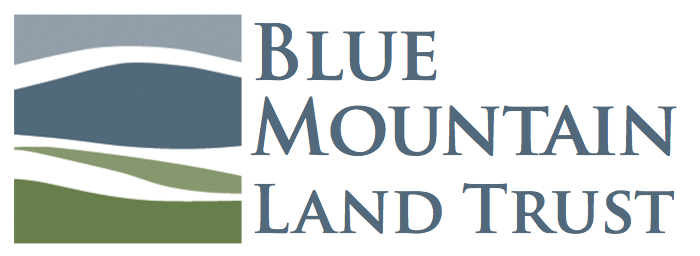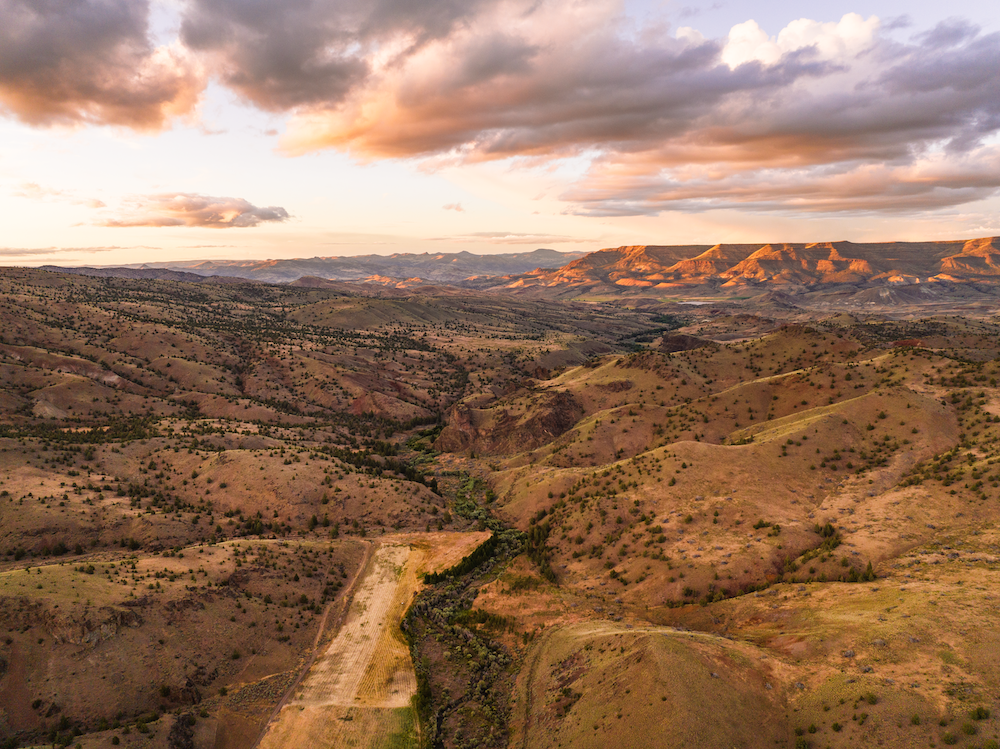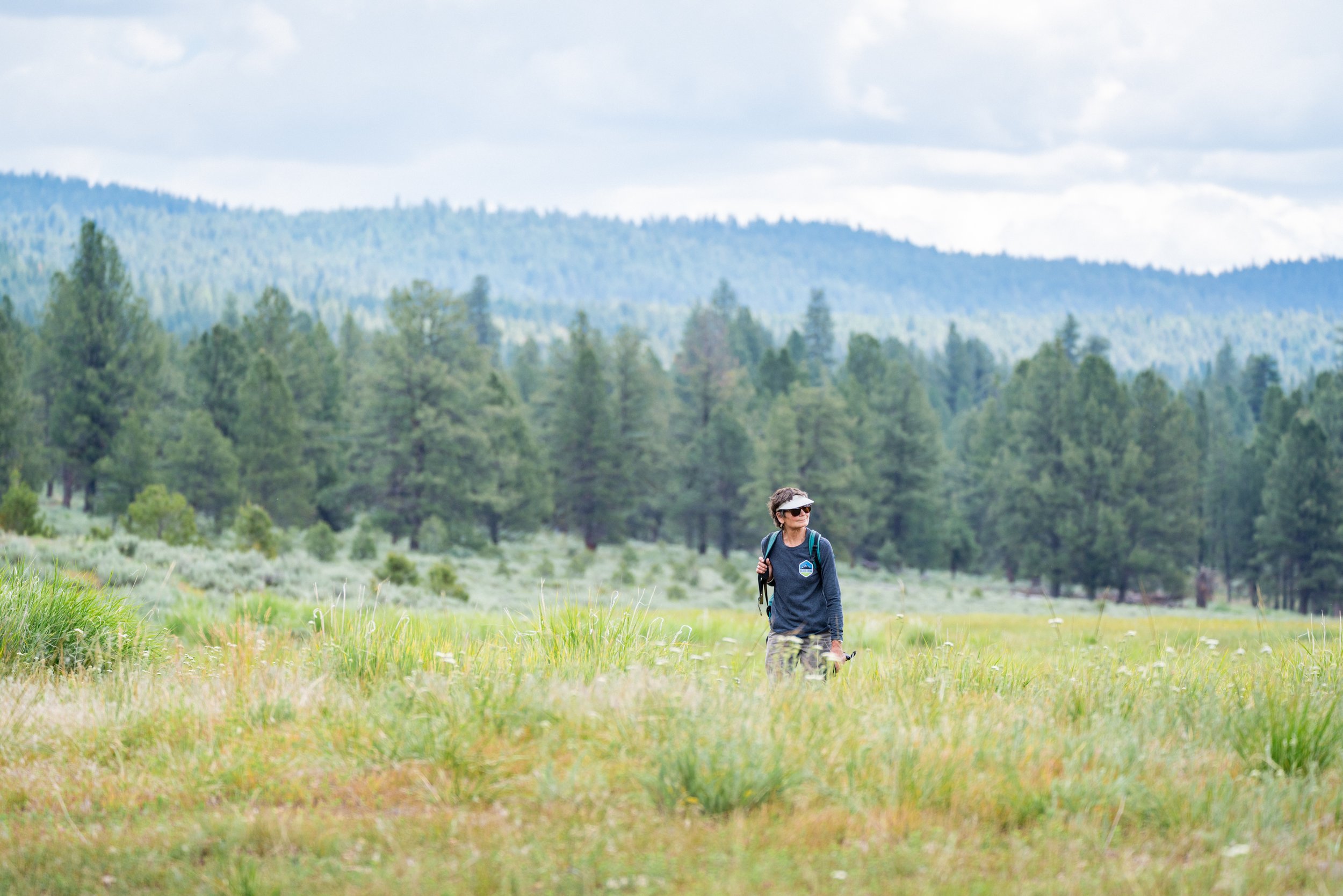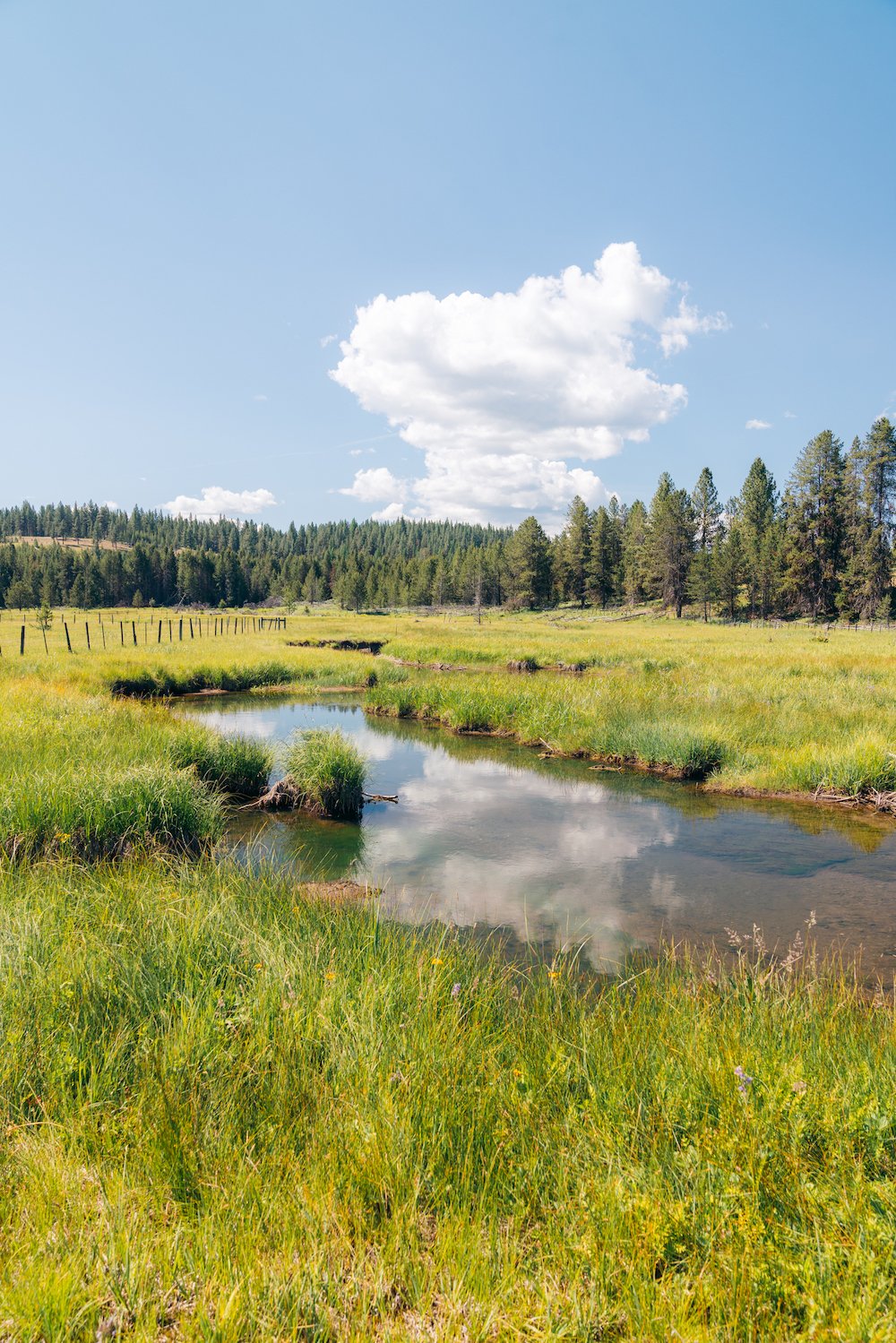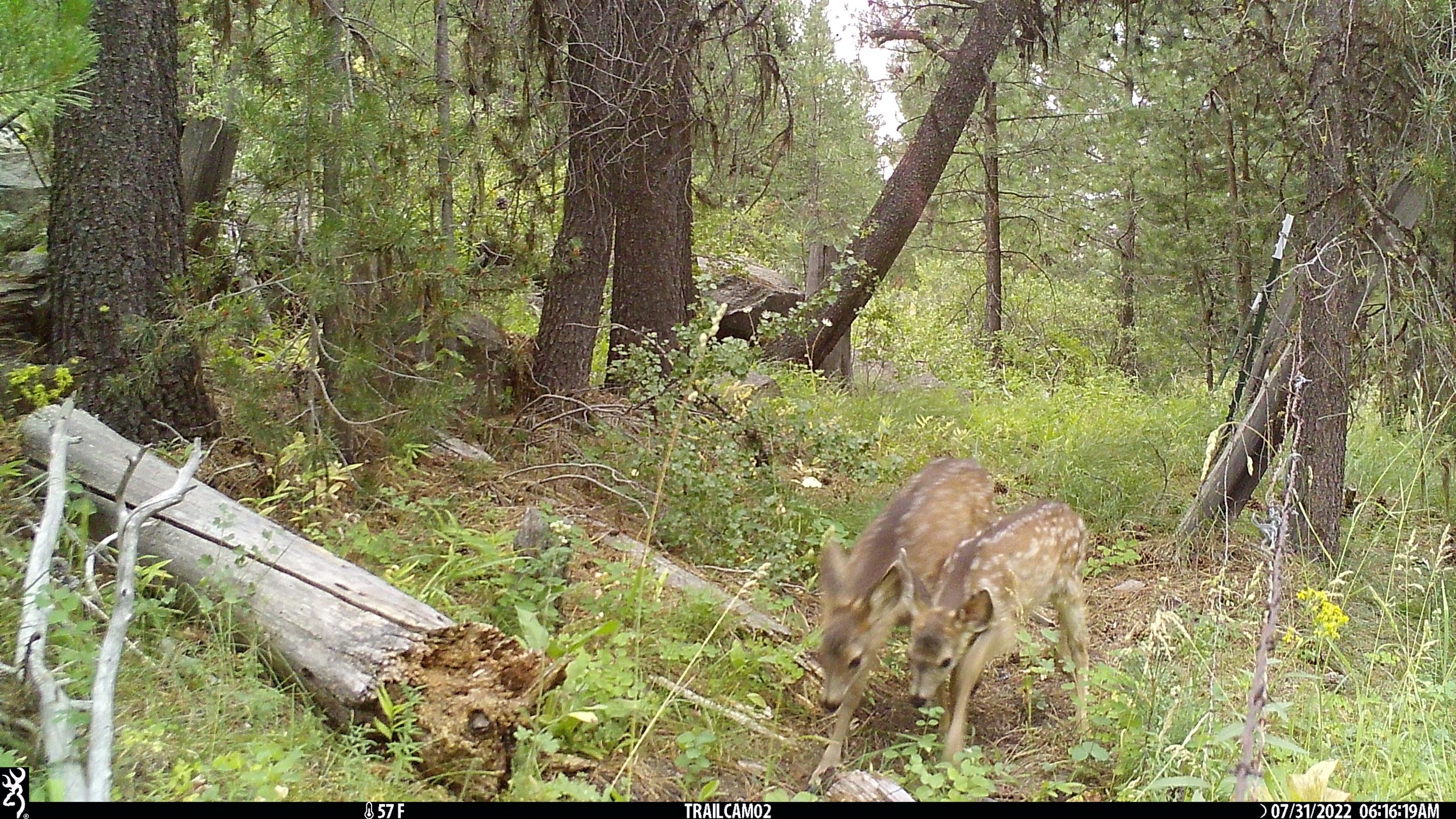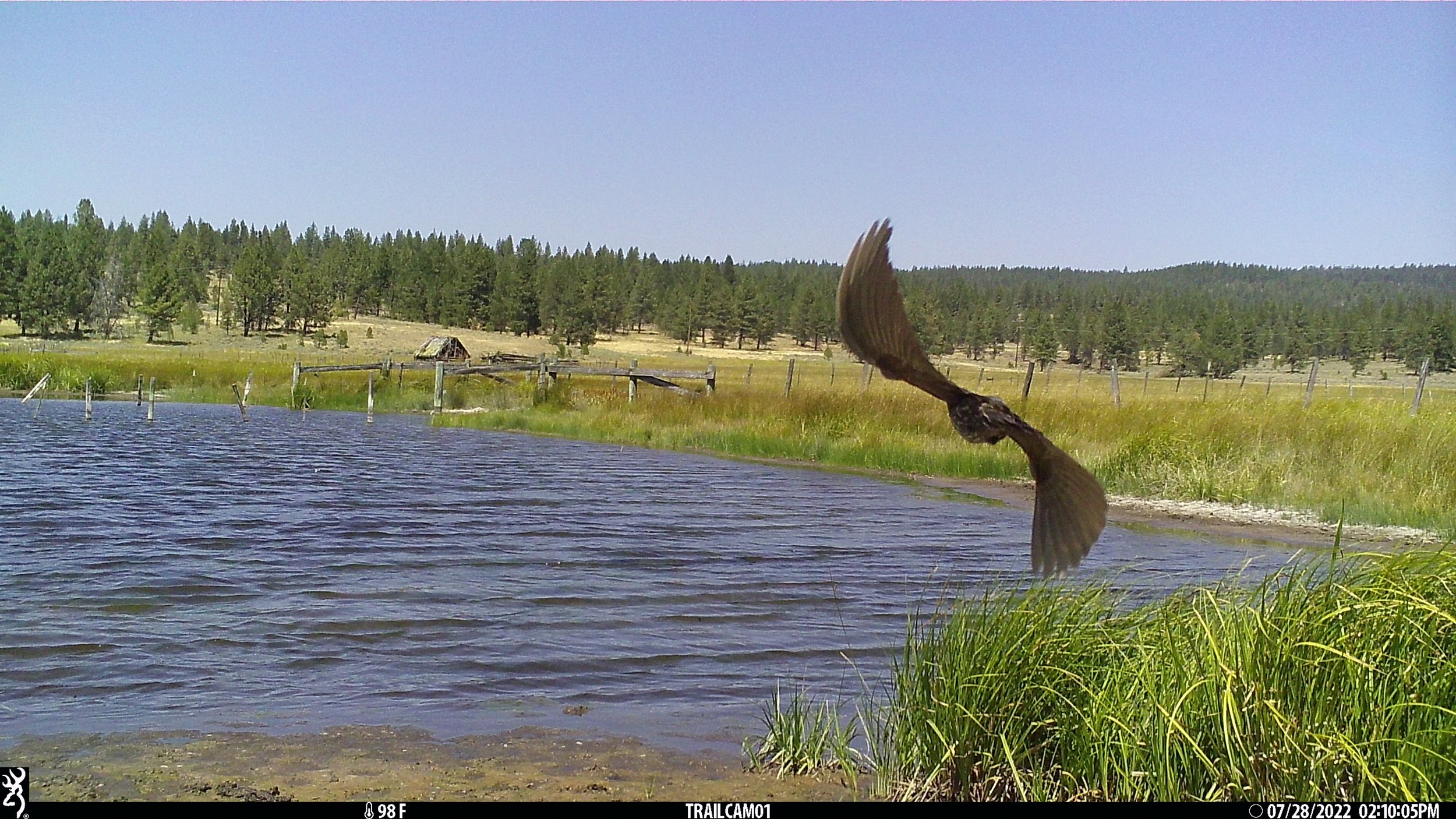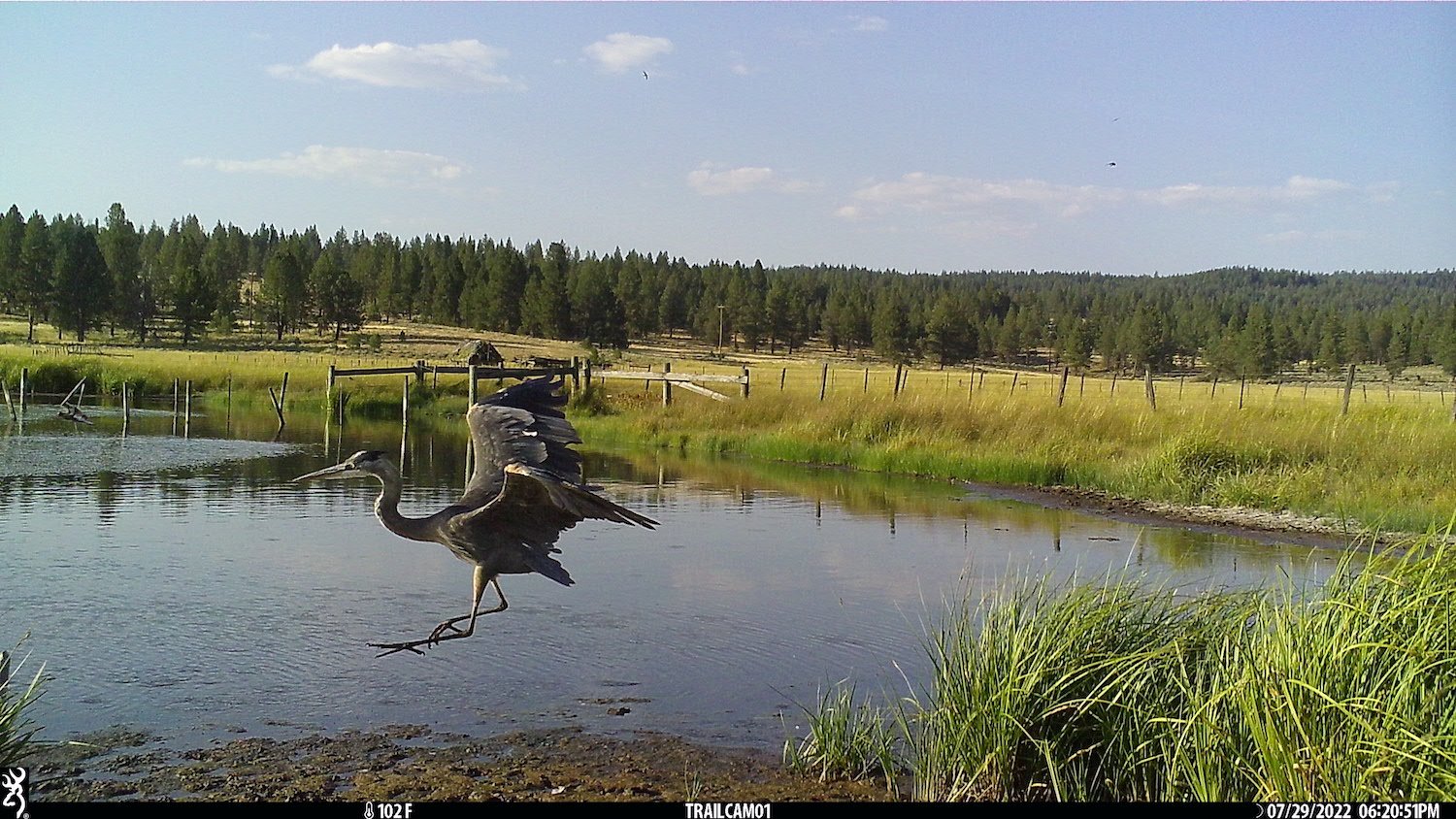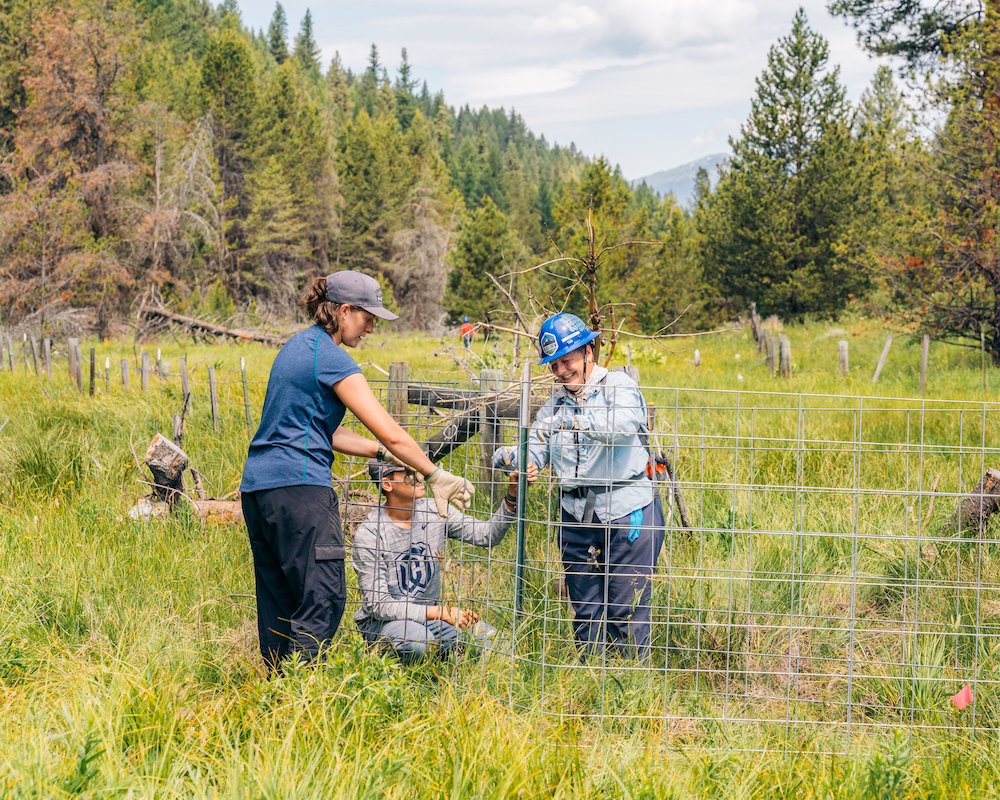Revitalizing land for a resilient future.
The Blue Mountain region is like no other. From rolling farm fields to flowing rivers and sagebrush seas, these landscapes hold what we value most: clean water, open spaces, critical wildlife habitat, good soils, and the well-being of agricultural communities.
BMLT doesn’t just talk about climate resilience, it’s at the core of everything we do. From Dayton, WA, to John Day, OR, every acre matters. Our conservation easements aren’t just paperwork—they’re an ongoing commitment to the communities of the Blue Mountain region to safeguard what matters most.
Protecting a property isn’t where the work ends, it’s when our perpetual responsibility begins. This continuous effort benefits both the environment and the local community—our way of saying, “We protect the land you love. Forever.”
PHOTOGRAPH BY WILLIAM FROHNE
Strong commitments, brighter tomorrow
WHY IS STEWARDSHIP IMPORTANT?
Our foundation is built on enduring relationships — with surrounding landscapes and the stewards who care for them.
When we conserve a property, we’re in it for the long haul. Forever isn’t just a word, it’s our commitment. Our ongoing stewardship ensures that each protected property, with its unique blend of native habitat, rivers, streams, wildlife corridors, and productive farmland, remains special and safeguarded.
Protecting a property isn’t where the work ends, it’s when our perpetual responsibility begins. We annually monitor our protected properties to ensure compliance with the terms of the conservation easement and assess the condition of the conservation values, such as the habitat, farmland, and water.
Stewardship visits include meeting with the landowner, walking and hiking the property, taking repeat monitoring photos for data collection, documenting property conditions, and the use of any reserved rights. When combined, these actions help track a protected property over time to ensure the conservation values are truly stewarded for long-term success.
As our list of properties and acreage of protected land increases, so does our responsibility to steward these places responsibly. Our communities need to recognize the ongoing effort and work invested even after a project concludes.
Photograph by Matt Franklin
Collaboration in action
PHIPPS MEADOW - OREGON
In 2021, BMLT acquired its inaugural property, Phipps Meadow, with the collaborative support of the Confederated Tribes of the Warm Springs Reservation of Oregon, the Oregon Watershed Enhancement Board (OWEB), and financing from Craft3.
Situated near Prairie City, OR, Phipps Meadow has 278 acres of wetland meadow, pine forest, and sagebrush steppe habitat, which is essential for over 200+ species. Phipps Meadow is an ecological haven, spanning an impressive 1.58 miles along the headwaters of the Middle Fork John Day River.
BMLT reached a major milestone this past summer when we successfully repaid our property loan. Phipps Meadow is now under BMLT’s sole ownership, with OWEB holding a conservation easement. Our final OWEB grant responsibility involves creating a detailed property management plan, including future restoration work.
A new era at Phipps
We take our commitment to caring for Phipps Meadow seriously. Beginning with partner collaboration, we’re in the early stages of planning and implementing efforts to restore upland, forest, meadow, and riparian conditions, improving the overall ecological function of the area.
The goal: help the environment function better so it thrives, focusing on the area where the land and water meet along the banks of the Middle Fork John Day River and the woods where wildlife roam adjacent to the Malheur National Forest.
Photograph by Matt Franklin
Forward-thinking solutions
This year at Phipps Meadow, BMLT went all in on stewardship and restoration planning. We’ve worked with engineers, conducted surveys, held planning sessions, and visited sites for data collection.
Habitat restoration is the process of repairing or improving an environment that has been damaged or altered. It involves activities like planting native vegetation, managing invasive species, and creating conditions that support the return of healthy and diverse ecosystems. The goal is to bring back an area’s natural balance and functions, providing a suitable home for native plants and animals to live and thrive.
We are grateful for grant funding to support this work from the Cornell University Bird Initiative, Oregon Watershed and Enhancement Board (OWEB), Bella Vista Foundation, the Bureau of Reclamation (BOR), and the Confederated Tribes of the Warm Springs (CTWS).
>> FINDING A BALANCE
With support from the Cornell Land Trust Bird Conservation Initiative, BMLT worked with the Malheur National Forest and Grant County Soil & Water Conservation District to identify and treat invasive weeds in the forested areas and meadow. Canada thistle and Ventenata are problematic invasive weeds in grassland and open habitats across the west. Characterized by its dense growth, Ventenata competes with native plants, often winning, which negatively impacts all of the living things of an area. Through strategic approaches, we can make strides in preventing the spread of invasive weeds and its impact on the ecosystem at Phipps Meadow.
>> PLACE-BASED KNOWLEDGE
Understanding a place is a major part of the restoration planning process. Here are a few highlights from the year:
The Oregon Department of Fish & Wildlife (ODFW) performed spawning surveys to identify Chinook salmon presence. During the survey, ODFW observed locations, timing, number of salmon nests (known as redds), and the overall behavior of the salmon during their reproductive season.
The Confederated Tribes of the Warm Springs Reservation strategically placed temperature loggers and flow gauges along the Middle Fork John Day River, collecting valuable data throughout the year. Different fish species and other aquatic life have specific temperature preferences, and monitoring helps ensure conditions are suitable for their well-being. Adequate water flow is necessary for supporting various life stages of aquatic species.
Volunteer Jim Soupir, a member of the Grant County Birders, surveyed and tallied bird species and population numbers at Phipps Meadow. By building on data from our species survey conducted by Environmental Science Associates (ESA) last summer, over 70 bird species were found. This important baseline data will help us track bird populations and their response to future forest restoration efforts.
Bird out at Phipps
Follow bird species at Phipps Meadow by using eBird, a free online tool from the Cornell Lab of Ornithology.
Beaver activity at Phipps Meadow. Photograph by Matt Franklin
Volunteers & partners work together: Protecting native plants
At BMLT, we firmly believe in the power of grassroots efforts and community collaboration. Together with the North Fork John Day Watershed Council (NFJDWC), BMLT hosted our first volunteer stewardship work party at Phipps Meadow. A group of volunteers, including the BMLT Blues Crew, worked together to install over 40 plant enclosures as part of a larger river restoration effort to support vital habitat for salmon, steelhead, and more.
Riparian plants provide shade to keep water cold for aquatic species in the hot summer months. The group took significant steps forward to encourage native vegetation growth and safeguard these plants against overgrazing by elk, deer, and trespassing cattle.
With support from OWEB and the NFJDWC, volunteers installed riparian plant enclosures along specific portions of the Middle Fork John Day River. By doing so, we created a protective barrier that promotes the growth and development of riparian species like willows and aspen.
The volunteer work party brought together a dedicated group of individuals committed to making a positive impact on the environment and contributing to a brighter future for Phipps Meadow.
Photograph by Matt Franklin
Photograph by Matt Franklin
Give back
Interested in volunteering with the stewardship team on projects? Sign up to stay in the loop.
